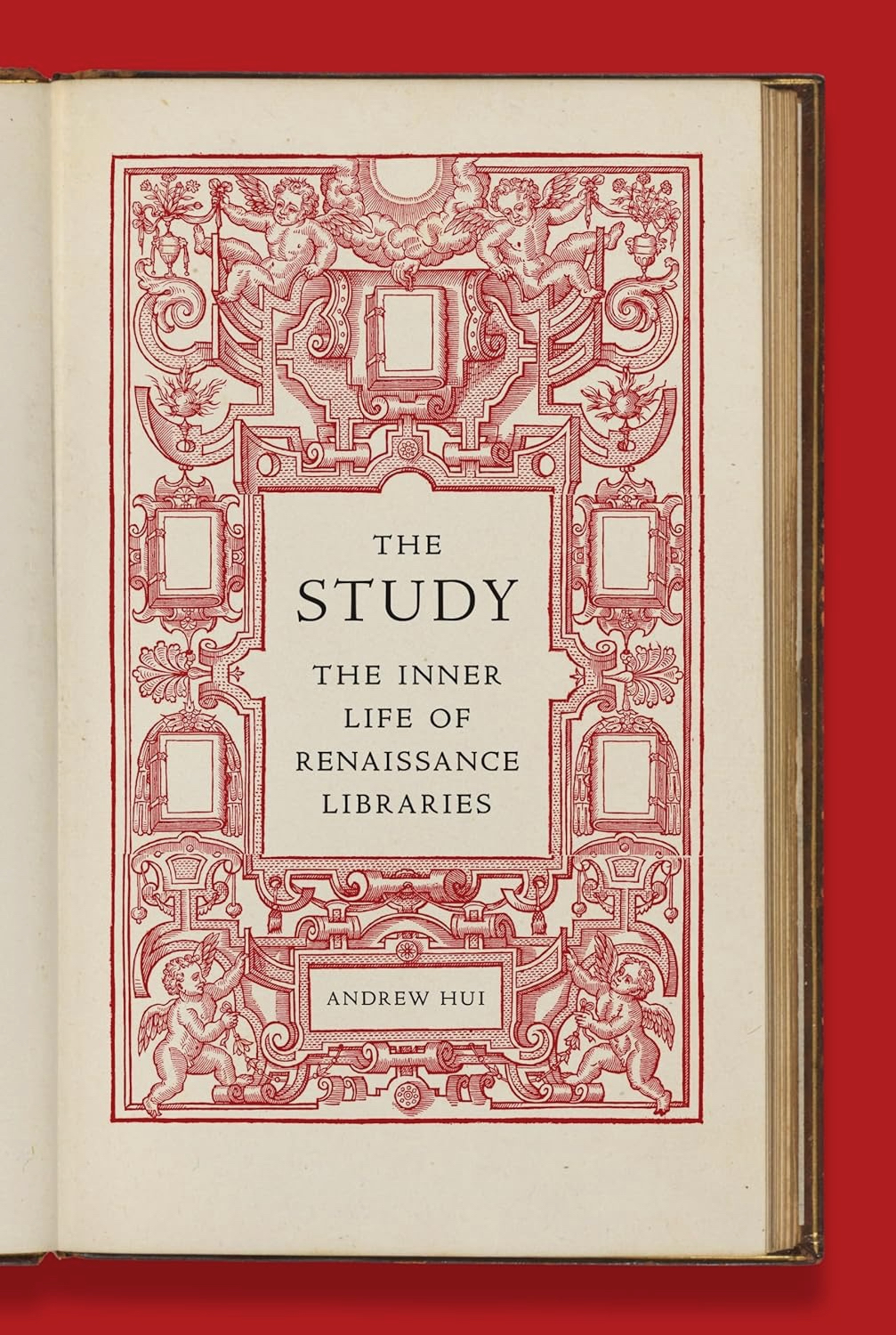
A Book-Lined Retreat
February 20, 2025 | The Wall Street Journal
Picture a humble study. It is situated on a house’s second floor, near the bedrooms, forming an inner sanctum removed from the bustle of the street. A lamp sits on a desk to give a working writer plenty of light. Books line the walls from floor to ceiling, supported by bookends and embracing subjects from modern fiction to history, music, and law. There is an easy chair for leisurely reading; a window above the dog’s bed affords a fine view of the trees. Close scrutiny might even reveal a bottle and a pair of hidden glasses for evenings when company stops by, or when the muse stays away.
Many features of that room—where this article was written—have a lineage running back centuries, according to Andrew Hui, a scholar of the humanities at Yale-NUS College in Singapore. To make his refuge “inaccessible but to a few,” the 15th-century Italian intellectual Federico da Montefeltro placed his study high up in his house, near his bedroom. The tradition of the faithful pet lending company to the scribe dates to the ninth-century Irish poem “Pangur Bán,” or “The Monk and His Cat.” Books and liquor have appeared together at least since Shakespeare’s The Tempest. And every bibliophile has a special way to arrange precious volumes. Piero di Cosimo de’ Medici (1416–1469) organized his by color, in an age when readers had to bind their own books: “blue for theology, yellow for grammar, violet for poetry, red for history, and white for philosophy.”
In his delightful, wide-ranging work The Study, Mr. Hui undertakes a “historical investigation into the personal library,” with an emphasis on Renaissance humanists such as Michel de Montaigne (1533-92) and François Rabelais (ca. 1483-1553). Building on the ancient tradition of the spare monastic cell and the sacred text, these individuals made private spaces for secular reading, creating what Mr. Hui calls the studiolo. Their story is a brief chapter in a much longer tradition. The studiolo would evolve into the kind of room where Jane Austen’s Mr. Bennet read letters and avoided his wife in Pride and Prejudice. The study endures to this day, but perhaps in diminished form. As books recede in a digital age, so does the need to shelve and consult them in our home offices.
One of the first European thinkers known to have created a private study unaffiliated with the court, the church, or a university was the Italian poet Petrarch (1304–1374). A ceaseless traveler who carried St. Augustine’s “Confessions” with him under his cloak, Petrarch withdrew to his house in southern France during the Black Death. There he was free to contemplate existence in seclusion and peace. “I gather all the friends I now have or did have,” he wrote of his private library; “I have established my Rome, my Athens, and my spiritual fatherland.” Restlessly collecting books—and expressing a now-familiar guilt over not having read everything on his shelves—he enjoyed simply spending time among all the authors. “I marvel at their accomplishments and their spirits or at their customs and lives or at their eloquence and genius.”
Ejected from the Florentine court by the Medicis, Niccolò Machiavelli (1469-1527) made his study a redoubt from public life and the seat of his life’s work. At his family villa outside the city, he wrote an evocative paean to his private library in 1513: “When evening has come, I return to my house and go into my study. At the door I take off my clothes of the day, covered with mud and mire, and I put on my regal and courtly garments; and decently reclothed, I enter the ancient courts of ancient men.” Here Machiavelli worked out the beginnings of what would become his great contribution to political theory, The Prince (1532). Although it was published posthumously, his correspondence suggests the book was written in his study in the peaceful Tuscan hills.
The most extraordinary studiolo examined here belonged to the French essayist Montaigne (1533–1592). He retreated to his family’s estate outside Bordeaux in 1571 and lived in quiet reflection, spending most of his time in a study high in a tower on the grounds. There he inscribed an introvert’s credo: “Montaigne, long weary of the servitude of the court and of public employments, while still entire, retired to the bosom of the learned virgins, where in calm and freedom from all cares he will spend what little remains of his life.” He studied and collected, even gathering works from China and ancient Egypt written in languages he could not read. On the beams of his library’s ceiling he inscribed dozens of enigmatic phrases, such as “It is possible and it is not possible” and “Undecided.”
Montaigne’s tower and its decorative aphorisms are beautifully reproduced in color plates in The Study. So are such masterpieces of Renaissance painting as Vittore Carpaccio’s “St. Augustine in His Study” (1502), which shows the titular theologian ensconced in orderly rooms, lost in thought. What unifies these visions is a centuries-old devotion to the preservation of knowledge and the imperative of solitude as reprieve. Mr. Hui warns against excess: Marlowe’s Faustus grew “into some sickness by being over-solitary” and Don Quixote read so many tales of chivalry that he lost his mind. Yet in moderation, the private library is a place of quiet joy. It embodies the lovely paradox that sometimes engaging life most fully means retreating and obtaining the space to think. For this, one requires books, time, and a door to seal out the world.